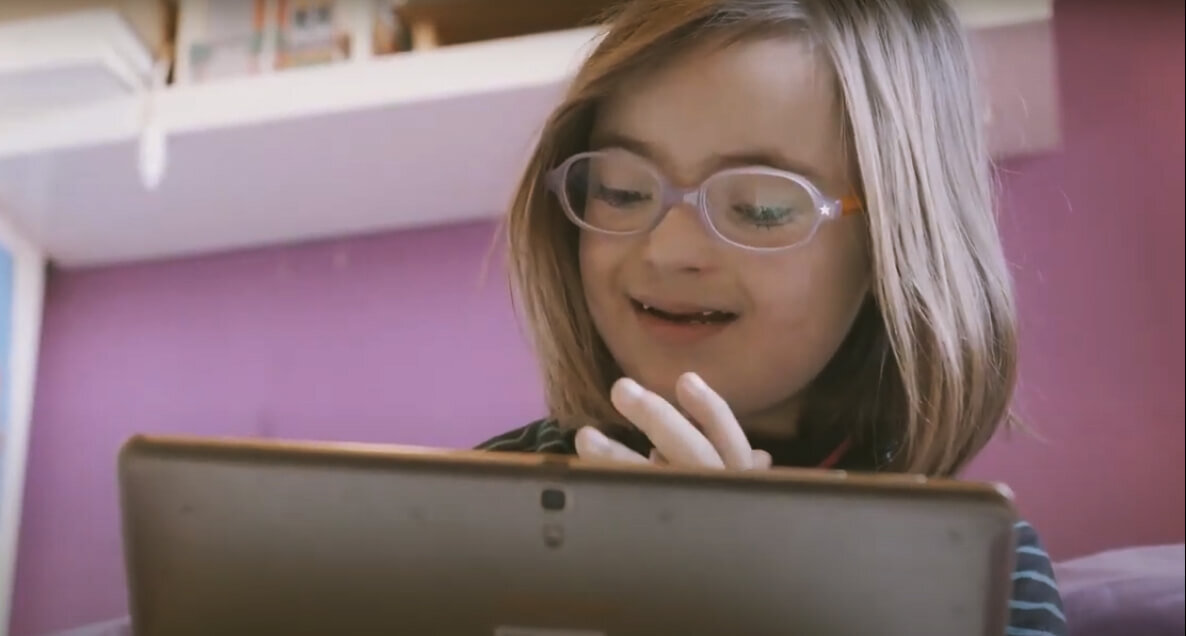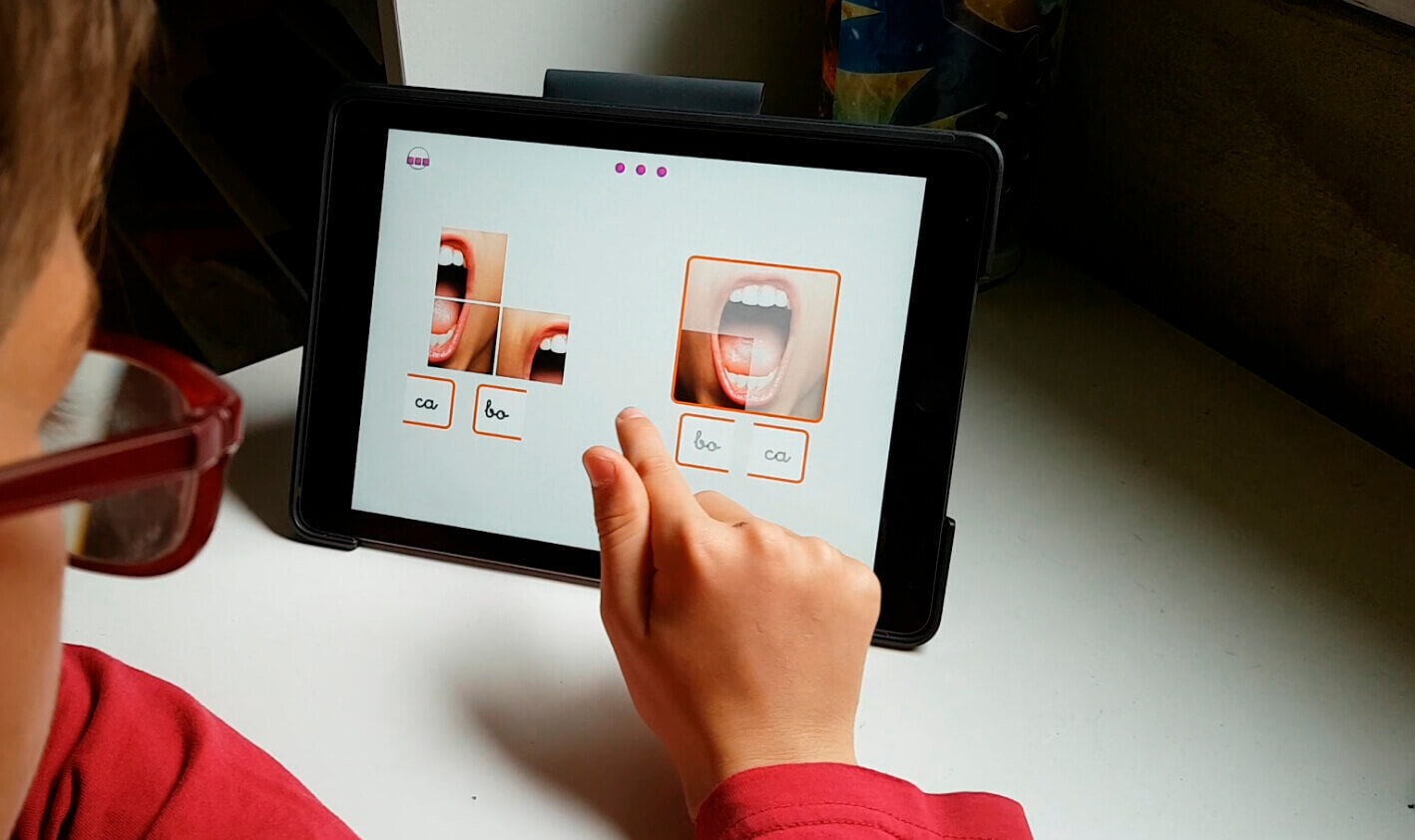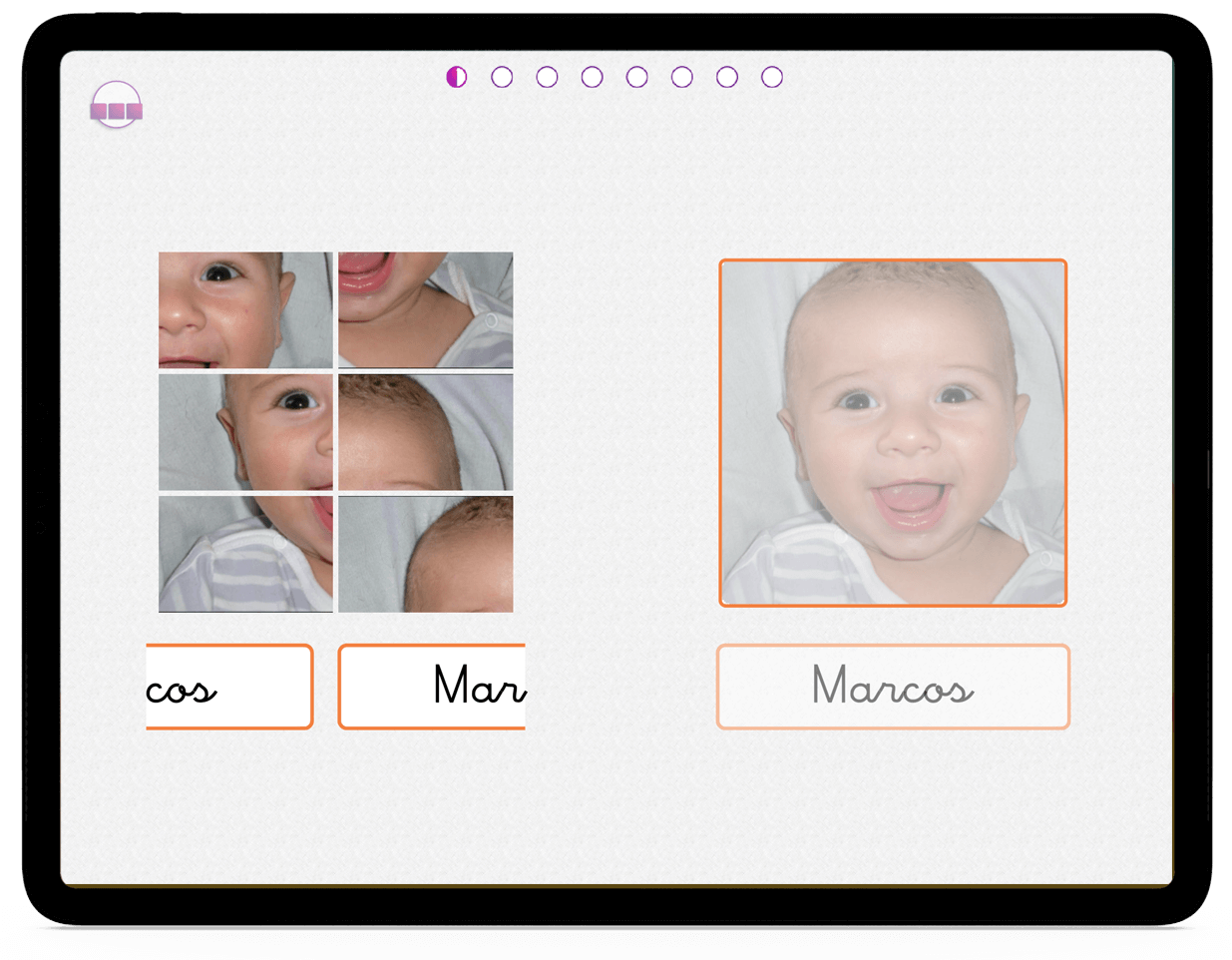We interviewed Gemma Fàbregas and Marie Anne Aimée, co-founders of “Yo también leo” (I Also Read), a Spanish-born learn to read app for children with cognitive disabilities.
One of the first skills we learn in school is the ability to read and write. This learning usually occurs in the first years of schooling, between the ages of 3 and 6. Schools often use traditional literacy methods such as the alphabetic (spelling) method, the phonetic method, or the syllabic method. However, many children have difficulty learning to read under conventional methods. Despite this, most schools continue to use traditional methods even though there are alternative ways of teaching literacy.
With this in mind, two mothers decided to undertake an educational project that would support children with intellectual disabilities in their literacy process. Thus, Yo también leo was born, an application designed especially for children with Down syndrome, autism, and various functional cognitive disorders so they could learn to read with a methodology adapted to their needs.
In June 2017, during the Open University of Catalonia’s Days of Knowledge Transfer and Entrepreneurship (SpinUOC 2017), Gemma Fàbregas and Marie Anne Aimée, co-founders of Yo también leo, pitched their project, which won the audience award. The project is supported by the Open University of Catalonia. In addition, it receives pedagogical advice from the Talita Foundation, which has more than 25 years of experience teaching children with neuro-atypical development to read and write.
We chatted with Gemma and Marie Anne to tell us more details about the Yo también leo educational app. Here is a translated version of this conversation.
Observatory (O): How did the idea of creating a learning-to-read application for children with cognitive disabilities come about?
Gemma Fàbregas and Marie Anne Aimée (GF & MAA): Yo también leo was born thanks to our sons and daughters. We both have sons and daughters of similar ages. Seeing them play and interact with each other, I realized that Martina (Marie Anne’s daughter) had similar abilities to my children, especially in handling technology. On the other hand, she still did not read more than her name at nine years old. We talked about the issue and the problems of Martina and other children learning to read with the system they used in schools. We started looking for applications that implemented the Global Reading Method, and there was nothing. Coinciding with the final work of the Masters in Multimedia Applications that I was completing at the Open University of Catalonia, we decided to create an application that would implement the Global Reading Method in a multimedia environment.
O: Why the need to create an application to learn to read?
GF & MAA: It is not a learning-to-read application like others we can find in the market. Yo también leo implements a methodology adapted to the needs of children with intellectual disabilities or developmental disorders.
It makes it possible to work with the Global Reading Method, a method already validated by various associations worldwide, to teach children with an intellectual disability to read. Until now, the application of this method was performed manually, using custom tabs that require many costly hours of preparation. Thus, the need arose to help children with a technological tool adapted to their needs and help families and educators in this task.
O: Can you explain the Global Reading Method and why you decided to use it?
GF & MAA: The Global Reading Method begins with image recognition, including drawings or spellings of words. The child starts by recognizing the spelling of the word as if it were an image. Later, the child begins to decompose the word into syllables and, finally, recognizes the letters. That is totally contrary to the system used in schools.
This method is ideal for these children for several reasons. First, it is a visual method preferred by these children to learn any subject because hearing is very complex and takes longer to develop. Therefore, if we had to wait for these children to have the ear canal developed enough to read, we would surely start the process too late and lose precious years. Secondly, it is a method that consistently gives meaning to everything they read. Providing the image with the word’s spelling makes it understandable to them. Third, it is a 100% customizable method that is based on the interests of the child.
Attempting to teach a child with cognitive disabilities to read with a standard methodology is a disaster in most cases. These children first need to understand what they are doing. Therefore, in the Global Reading Method, we never use meaningless pseudo-words or syllables that mean absolutely nothing to them, but this would be the syllabic method taught in the schools. Furthermore, they need the information to enter them through the visual channel without omitting the auditory part. Therefore, in the application, each word they read is accompanied by an image and audio. Finally, the Global Reading Method is personalized to adapt to both the rhythm and each student’s interests.
O: What are the main differences between the Global Reading Method and the methodology commonly used in classrooms to learn to read?
GF & MAA: The Global Reading Method starts the learning process with complete words and phrases having meaning, while synthetic systems (syllabic, alphabetical, and phonological) begin with the most minor and meaningless parts (syllables, letters, or sounds). By having visual support, children comprehend the reading from the first moment.
Another significant difference is the customization that allows adapting to each child without following a pre-established pattern. Instead, it is based on the motivation and interests of the child. Thus, it is an active, playful, varied, success-oriented method. Another advantage of this method is that it helps the child expand their vocabulary and pronounce it better in their spontaneous oral expression.
“Attempting to teach a child with cognitive disabilities to read with a standard methodology is a disaster in most cases.”
O: Why is the use of articles crucial in the literacy learning process for children with intellectual disabilities?
GF & MAA: Seeing and listening to the words with their articles from the beginning of learning to read has two very significant advantages: First, the child incorporates the articles naturally into the language they are acquiring. They are usually children with difficulties in oral language and tend to omit sounds with no meaning. Second, using the article helps them to learn that words have gender and number. Some professionals prefer initially to present words without an article; for this reason, the Yo también leo application provides the option to choose with or without the article.
O: How did you develop this app? In addition to using the Global Reading Method, what other pedagogical methodologies or learning theories are reflected in this app?
GF & MAA: The application is based on the Global Reading Method, but its development includes educational guidelines that other applications overlook. These children must internalize some learning that other children learn more intuitively, for example, the sense of the reading. We read from left to right and from top to bottom. This may be very obvious to us, but it is not very apparent to them. That is why all activities start at the top left, and all activity movements go from left to right.
Another critical point is that although the Global Reading Method is ideo-visual, we must not forget phonological learning. For this reason, all the application activities combine image, text, and audio with natural locution. The reference we give to children must have correct diction and intonation.
O: To who is Yo también leo targeted?
GF & MAA: The app is designed for children with cognitive disabilities, ASD, or other serious learning difficulties. Its design considers the ease of interactions, using simple touch-and-drag movements, and avoiding complex movements due to the children’s difficulty with motor skills and coordination. The buttons and images are literal to facilitate their understanding. Cognitive accessibility has been incorporated both in the content and the design of interfaces.
The methodology used is suitable for children with different profiles. For example, children with Down syndrome have been taught for years in educational support partnerships using the Troncoso method, one of the distinct variables of the Global Reading Method. Children with ASD are also trained with this method. Whether or not they have an associated cognitive disability, knowledge with meaning and a visual basis make it easier for them to understand the texts. In addition, this methodology stimulates their oral language and fluency.
For these reasons, the Yo también leo application is suitable for children with various intellectual disabilities or developmental disorders. Also, the application is a good tool for any child with neuro-atypical development who begins to learn to read (between 3 and 6 years old).
O: What are the advantages of including positive reinforcements and image/audio customization? Why is this important?
GF & MAA: Positive reinforcement is crucial because of the high level of frustration these children have. They must be motivated to keep working and know that if they make a mistake, nothing happens, we all make mistakes, and we simply have to try again. Customization is one of the most exciting points of the Global Reading Method. Children, like everyone else, are driven by their interests. So if we focus the learning process on one of their interests, we are already one step ahead in motivating them.
This focus may simply involve objects they use every day, but we can customize them in activities so that the child learns to read based on the global perception of the word spellings. These can be names of friends or family, words related to the sport that they are passionate about, or characters from their favorite series, to give a few examples.
O: It impresses me that using the application does not require connecting to the internet or links to social networks or other applications. Why this emphasis on disconnection?
GF & MAA: This is something we primarily sought because we do not want distractions. Although the application is designed in a playful format, we must not forget that it is an educational application. What we specifically want is that when the child is using it, they do not have distractions. In addition, working offline avoids connection problems in those schools or areas where the internet connection is not as fluid as we would like.
O: One of its objectives is “to improve the educational and social inclusion of children with
intellectual disabilities.” How does this application contribute to inclusion?
GF & MAA: The application is an ideal tool for real inclusion in the classroom. It can be used by all children in the class in the infant stage because the Global Reading Method is excellent for early learning of reading. The application’s design makes it accessible to children with cognitive disabilities, so it is an application accessible to all.
Real inclusion means sharing experiences and learnings, feeling part of a team, each with its capabilities and possibilities. The app allows children with a cognitive disorder to learn to read with their peers but adapted to their level and work pace since the application is fully customizable. Our goal is to make the learning process increasingly adaptable to the profile of the learner. In this way, the application is the same for all students, although each learns at their pace and level.
“What exists in most schools is integration, and that means that they accept the student with special educational needs and integrate him or her into the classroom but do not include them.”
O: What failures or areas of opportunity exist in the current educational system regarding inclusion, specifically for children with cognitive diversity?
GF & MAA: The main problem is that there is no inclusion itself, except for the occasional school heavily involved in the subject. What exists in most schools is integration, and that means that they accept the student with special educational needs and integrate him or her into the classroom but do not include them. So, the child is at the school but usually doing different things than the classmates. For example, a teacher usually takes the child out of the classroom to work alone with him or her. The result is that the child is integrated into the school but is not part of the working team. Therefore, I believe that policies in education must be renewed and modified for the authentic inclusion of these children in the classroom.
The plans and methodologies keep considering only a portion of the children when various universal learning methodologies and systems should be used. However, the latter goal requires political will, adapting educational programs, training teachers, and providing appropriate resources to the schools. Let us bear in mind that 73% of children with an intellectual disability in Spain attend ordinary schools but without the resources or the appropriate methodology to attend to their needs. Schools continue to adapt their programs for these children when inclusion should have programs that serve all students. This need for adaptation and content creation requires educators to make a great effort to care for these children with dignity. However, that should not be the solution without educational policies well thought out and designed for every student in the classroom.
O: Its mission is to help mothers, fathers, families, and educators through this tool. Why is it important to involve families?
GF & MAA: I believe that the involvement of families is essential, not only with children with cognitive disabilities but for all children in the world. One cannot leave the school to bear the task of educating alone. To have quality education, both the family and the school must work hand in hand, develop shared objectives, help each other, and go to the limit to educate the child.
For children with a cognitive disability, this coordination with the school must be fluid since they are children with more difficulties in learning and need to continue working at home on the concepts acquired in the classroom. So, school and family must be on the same page and work the same way with the same methodology to strengthen the child’s security.
O: Finally, what would be your advice for those families who have a relative with cognitive diversity? Especially those who have recently been diagnosed with Down syndrome, autism or other types of intellectual disability and do not know what to do; where do they start?
GF & MAA: The first thing, keep calm and enjoy their son or daughter to the fullest. The diagnosis they have just received is not an impediment to enjoy the child who has just arrived; there will be time to think about what to do. Once the diagnosis is understood, accepted, and integrated, one starts moving. It is always good to go to an association that helps children with the same diagnosis because they have professionals who will surely provide the guidance and security needed.
Above all, the most important thing is to act exactly as you would with a child who has tummy pain instead of an intellectual disability, for example. What would we do? Well, help him get better and alleviate the tummy pain and do everything in our power so that the child grows healthy and happy, without tummy pain. Of course, we cannot “cure” the disability as we can cure tummy pain, but we want our little one to grow healthy and happy. We must believe in our child and all their ABILITIES and, above all, educate them as we would any other child.
Translation by Daniel Wetta.
This article from Observatory of the Institute for the Future of Education may be shared under the terms of the license CC BY-NC-SA 4.0 
)
)




)